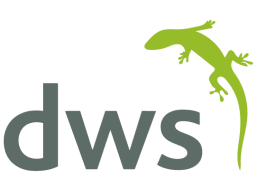In order to not set off an ear-worm, I’ll avoid the fa-la-la’s, but I will mention the importance of the timing of your code-current projects.
A lot has been said over the years about code-currency and the benefits it brings to every organization. Ensuring your JD Edwards EnterpriseOne code base is up-to-date, that you are using the latest & greatest functionality, code improvements, security enhancements and all the other benefits that the latest code level brings are myriad, and has been covered in many articles and blog posts. This blog seeks to answer the question – WHEN should I get code-current?
Oracle/JDE will soon be releasing Update 8 (UN8) of E920 – Release 24 – most likely Q4 2023 if we track previous years. UN8! That’s essentially 8 years of net-change since E920 was released in 2015. In numbers of years terms, that is similar to comparing base E920 with E812! From 2007! In other words, a heck of a lot of change to standard JDE E1’s business process/application functionality, not to mention the underlying tools differences in the semi-accompanying Tools Releases.

In those days of major releases every few years, organizations could easily be forgiven for “postponing” their upgrades for many years – even decades. They were, after all, large, expensive and let’s be honest – quite onerous projects. These days, however, under the continuous delivery model in E920, keeping (and staying) code-current is a substantially easier proposition. In modification retrofit terms alone, DWS typically sees around 4-8% of an organizations overall modified footprint impacted by code-current Oracle net-change, meaning these code-current projects are fast. They are efficient. They are cost-effective. And they are a smart thing to do. But WHEN should you pull the trigger on your code-current project?
Obviously there are organizations that have specific busy periods during the calendar year, and they simply cannot spare the time and resources to tackle a code-current project during a particular period of time. Of course, DWS can take the stress away by delivering an already-retrofitted, code-current finished product to you, with minimal impact to your own IT staff, but that’s another story for another blog.
Then we have many organizations that won’t act until UNx is released. History shows us these updates are released Q4 each year, typically Nov/Dec. These organizations tend to seek help from DWS with their code-current projects between December and the following March. Which is fine if that is your “quiet spell” in the calendar year. For everyone else, though, waiting for the Update to arrive may not be optimal timing from a business perspective. But it needn’t be a problem.
A typical example would be an organization that decides to wait for UN8 to be released, despite the lead up to the holiday season being a notoriously difficult time for several reasons. They select December 1st 2023 as their target ESU/Code-Current date, and on that date proceed to download UN8 and (the handful of) ESUs made available by JDEdwards subsequent to UN8’s release. Not forgetting that UN8 itself contains all previous ESUs. Updates are cumulative. That is, they include all previous E920 ESUs. The important factor to consider is that when you elect to get code-current, you typically nominate not only the Update but also the subsequent ESUs you wish to get current against.

Now take a second organization. This company decided on a target ESU/Code-Current date of October 1st, 2023, and on that date download the previous year’s UN7 (from Nov 2022) and all ESUs (several hundred of them) made available by JDEdwards subsequent to UN7’s release. This means this organization is effectively at an ESU level only two months shy of the first example. For all intents and purposes they are at ESU level “UN7 and 5/6ths (of UN8)”.
This essentially means that, so long as you choose to get code current on a (semi) regular basis, it matters not WHEN in the year you opt to run these small, efficient projects. It doesn’t necessarily need to be seasonally aligned with the release of Oracle’s Updates. So when should you pull the trigger on your code-current project? The answer is simple. From an ESU/Update perspective, it really doesn’t matter. Or put even more simply: Now.
Lee Balsom
Product Strategy Director, DWS




